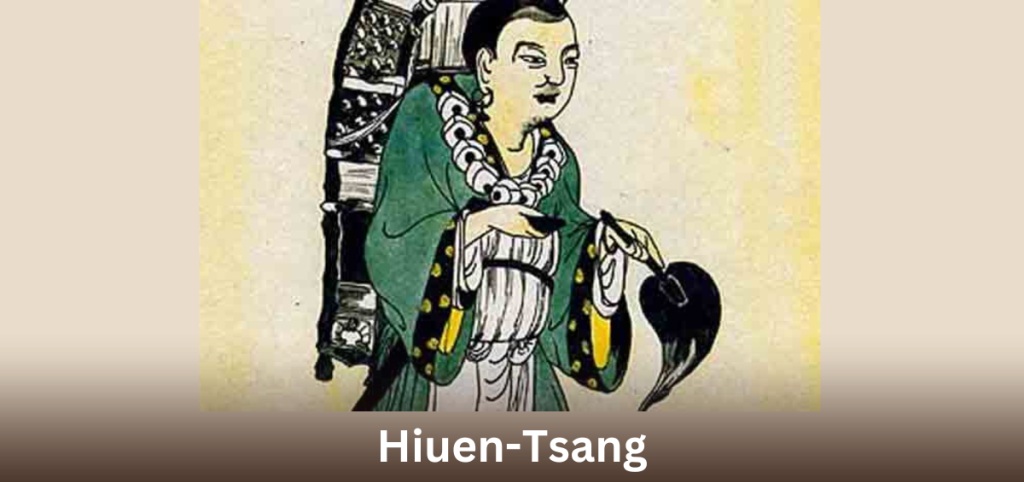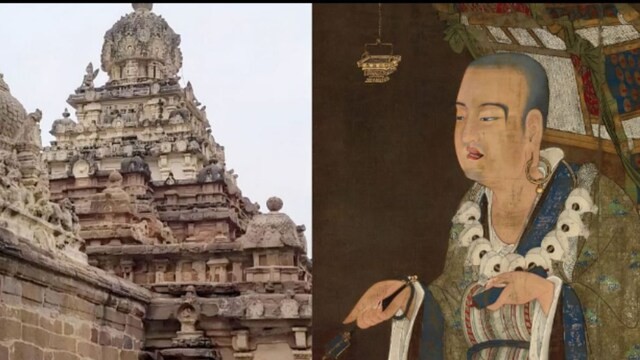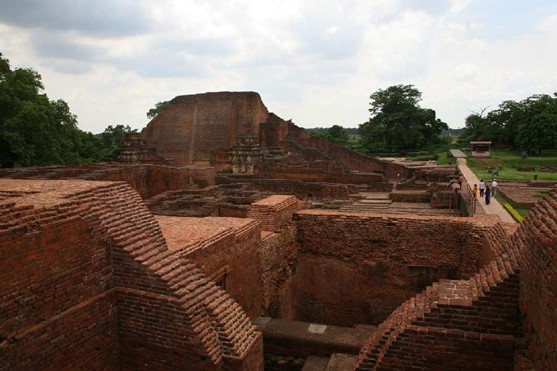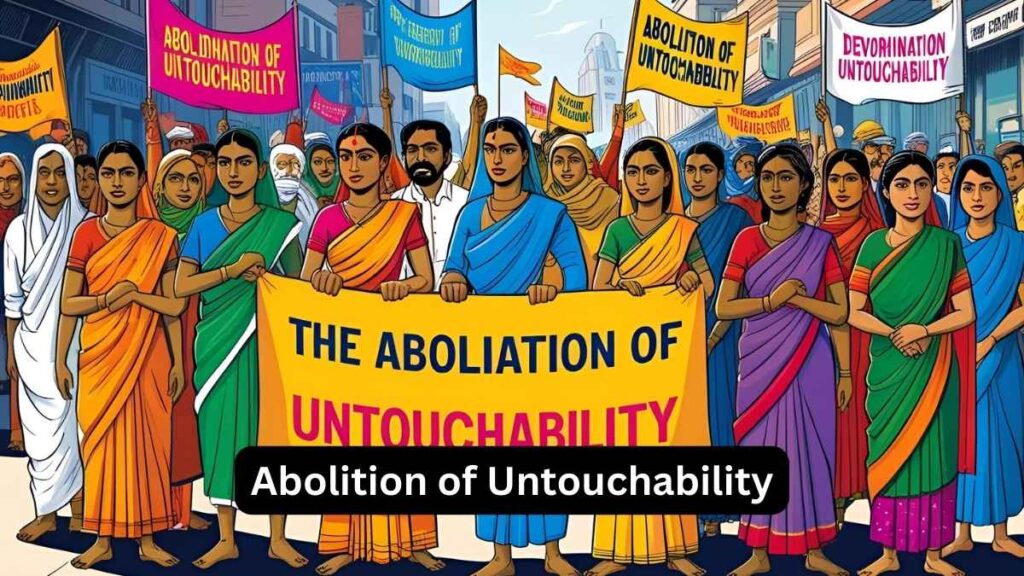Hiuen Tsang’s Account of Ancient India – History Notes for UPSC Preparation
Understand the Hiuen Tsang’s history and his detailed account of 7th-century India under Harshavardhana. Useful for UPSC aspirants, covering political, social, religious, and educational insights.

Hiuen Tsang’s account of ancient India is a valuable source, as it is the only first-hand foreign description available about 7th-century India, especially during Harshavardhana’s rule. Hiuen Tsang’s detailed observations covered everything from political administration and social stratification to economic circumstances and practices of religion – it is thus a relevant source to understand early medieval India. He provides insight into the decline of Buddhism, its co-existence with Hinduism, and the environment of education, especially in regard to Nalanda University. His descriptions also shed light over urban planning, tax collection, law and order, as well as concerns of daily life in different parts of the country. Thus, his travelogue is worth a look not only for UPSC Prelims (factual questions) but also if one wants to use it in the Mains (analytical writing in GS Paper I and History Optional Paper). Additionally, his narrative allows us to relate India’s historical trajectory with the historical trajectories of the rest of Asia, especially where Indo-Chinese cultural and religious interactions were concerned.

About Hiuen Tsang: Chinese Monk and 7th-Century India Chronicler
Hiuen Tsang was a Chinese Buddhist monk and pilgrim who journeyed to India in the 7th century CE (around 630–645 CE), during the rule of King Harshavardhana. He travelled mainly out of a desire to gather Buddhist scriptures and learn firsthand about the land of origin of Buddhism. Being a dedicated scholar, he aimed to enhance his knowledge of Buddhist scriptures and import original texts to China, which helped hugely in disseminating and conserving Buddhist literature. Through traveling the subcontinent and narrating his observations, he bequeathed a lasting account of India’s spiritual practices, social life, and royal governments in this period.
Political Observations
Hiuen Tsang noted that India was a politically fragmented area with many kingdoms and local rulers vying for supremacy. Among these, Harsha’s empire stood out as one of the most dominant, with its capital at Kannauj, which Tsang acknowledged as an area of good administration and wealth. Tsang successfully outlined Harsha as a ruler who was fair and efficient while ensuring order was maintained, albeit local wars of succession among smaller kingdoms in places like Taxila persisted. The empire relied on land revenue as the source of funds, and the justice system was rigorous, with severe consequences for crimes such as treason. While war and instability remained common in certain areas of the empire, Harsha’s reign created at least some degree of peace and wealth in his presence.
Social and Cultural Life
Hiuen Tsang found that Indian society was organised on a strict caste-based hierarchy, with the Brahmins at the top and social mobility strictly curtailed. In spite of this strict division, he found widespread cultural veneration of learning and scholarship, especially in religious and philosophical studies, where scholars and intellectuals were greatly respected. Intellectual pursuits were greatly esteemed but worked within the framework of a strict caste system, pointing to the irony of ancient India’s academic culture
Religious Landscape
Hiuen Tsang saw that while Buddhism declined in most areas of India, large monastic centers such as Nalanda and Vikramashila were still places of active learning and religious practice. Concurrently, he reported a resurgence of Hinduism, with Brahmanical rituals and temple worship once again dominating. Although he had great admiration for the intellectual energy of Buddhist monasteries, he did not shy away from criticising the increasing corruption and slack discipline of some of the Buddhist monastic orders, which he felt contributed to the religion’s declining strength in the region.

Economic Life
Hiuen Tsang’s narrative depicts ancient India as a geographically self-sufficient region with the means to produce agricultural wealth and prosperity. He noted that trade and commerce flourished, especially in active urban areas, where bustling markets were maintained by regulatory establishments. The use of coins also indicated the existence of an organised system of commerce, representative of the economic vigour on the subcontinent.
Education
Hiuen Tsang gave vivid and respectful descriptions of Nalanda University, calling it an excellent centre of scholarship with a great library, a well-ordered system of teaching, and a lively population of thousands of resident monks. He explained that teaching at Nalanda was mostly religious in orientation, emphasising Buddhist philosophy and scripture, with Sanskrit as the chief language of study. His works reflect the intellectual seriousness of the university and its central position in determining the intellectual and religious contours of ancient India.
Urban and Rural Life
Indian cities, as he depicted them in his accounts, were strongly fortified with defensive walls, carefully laid out, and kept in a clean and well-ordered condition. Contrastingly, he observed village functioned on a local scale of self-rule, where individuals lived simple but contented lives, portraying a balance of harmony between urbanity and rusticity in ancient Indian society. His accounts describe a society that valued both urban development and the serene dignity of rural life
Hiuen Tsang travelled a number of challenging landscapes, facing dangers of difficult and unfriendly terrain, language barriers, endless encounters with brigands, and the threats of war, and did so with great determination. His perseverance in carrying out his pilgrimage from the Himalayan ranges of Kashmir to the jungles of the Deccan enabled him to ultimately make a significant contribution to our understanding of the cultural and spiritual legacy of ancient India by supplying us with irreplaceable records of contacts with different communities and regions.
Subscribe to our Youtube Channel for more Valuable Content – TheStudyias
Download the App to Subscribe to our Courses – Thestudyias
The Source’s Authority and Ownership of the Article is Claimed By THE STUDY IAS BY MANIKANT SINGH





